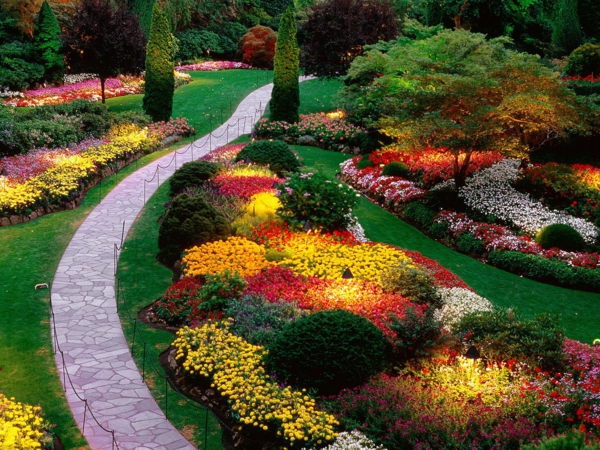
We all want to encourage our children to spend more time out in the fresh air, getting exercise and playing in the garden. It’s important for them to have somewhere that they can let off steam, whether you have a small yard or a huge lawn. It’s even more convenient for you if you can open the back door and let them out while you get on with pressing household jobs such as five minutes peace with a cup of coffee. To achieve this, however, it is critical for your outdoor space to be a safe environment for your children. It’s great if you can see them from your armchair or kitchen window but even then, there can be a lot of hidden dangers. If you can’t see your children at all then you need to be especially sure that little Johnny isn’t starting up the chainsaw in the shed and Jocasta isn’t playing with the pretty, blue slug pellets. Some things are obvious, such as making sure you garden is secure, but there be a lot of hidden hazards. Read this guide for ways to safety proof your garden to make sure you find the dangers before your children do.
Boundaries
Clearly, you need to check that small children cannot actually escape from your garden via fences or broken gates, but also make sure that boundaries themselves are in good condition. Walls need to be fixed if they appear unstable and ensure fences are repaired if they start to rot or split. Make sure hedges haven’t developed any gaps and keep them trimmed if they are sharp or spiky.
Water
Many people prefer not to have water features such as ponds with small children because of the clear danger of drowning, but if you do decide to keep or install a pond, then make sure it is completely fenced off and be vigilant at all times. Children are incredibly good at finding their way into forbidden places, and it is advisable to supervise them at all times when it comes to water, even if you think it is safe. The same applies to water fun such as paddling pools. Never leave children unattended even for a moment and make sure everything is cleared away at the end of the day.
Planting
Children and animals like to eat things, weird things, like bugs, mud and bits of plants. Make sure you don’t inadvertently plant any poisonous shrubs or flowers that your children can access. Obviously you wouldn’t intentionally plant a deadly nightshade but even seemingly harmless things such as daffodil bulbs can cause irritation and stomach upsets. Teach them not eat unidentified berries and mushrooms and make sure they always wash their hands after playing.
The Shed
Use your shed to keep any dangerous objects out of harms way. Any tools, particularly electric ones, but even small sharp objects like secateurs must be stored out of reach. The same goes for all chemicals such as fertilizers or pesticides and consider whether you want to use poetentially harmful products in your garden while your children are small. There are alternatives to slug pellets for example.
Toys and Equipment
It’s fun for your children to have playthings in the garden but they must be safe. Trampolines must have a safety net. They have been quoted as causing up to 10% of childhood fractures but are great fun if used sensibly. Make sure all other play equipment is used correctly. There is a huge range of choice out there from bespoke play areas to a small plastic toddler slide, but whatever your budget or space constrictions, make sure anything that your child plays on is correctly assembled and preferably not installed on a hard surface such as concrete. Playing in the garden should be fun, but it’s no fun to end up with a trip to the hospital.
Featured images:
- License: Creative Commons image source


